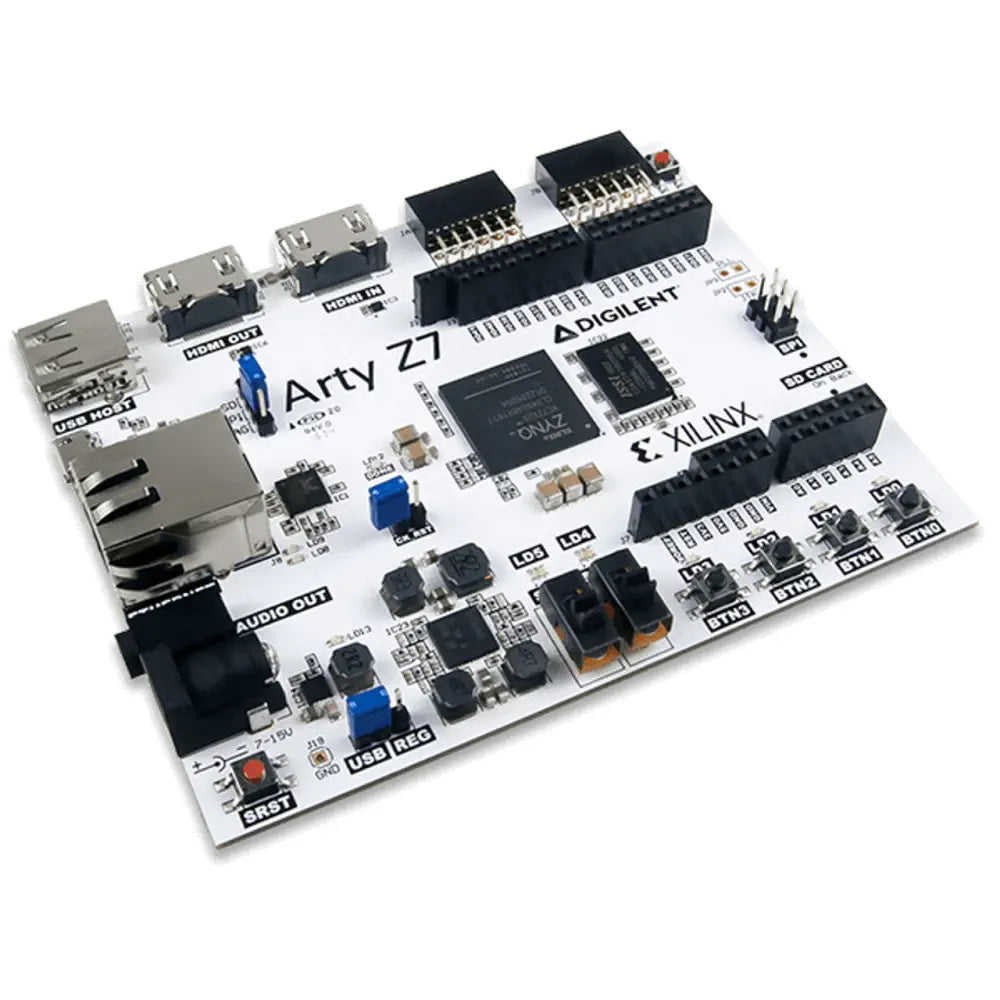
Digilent Arty Z7-10 Zynq-7000 SoC Development Board
Description Arty Z7-10: Zynq-7000 SoC Development Board w/ Dual-Core Cortex-A9 Processor Integrates software programmability of an ARM-based processor with hardware programmability of an FPGA Fully supported by Xilinx's Vivado Design Suite and SDSoC Development Environment Features high-bandwidth peripheral controllers and low-bandwidth peripheral controller Includes HDMI ports, mono audio output, push-buttons, slide switches, LEDs, and expansion connectors The Digilent Arty Z7-10 Zynq-7000 SoC Development Board is a comprehensive development platform, meticulously designed around the Xilinx Zynq-7000 System-on-a-chip (SoC) family. This family of SoCs integrates the software programmability of an ARM-based processor with the hardware programmability of an FPGA, thus enabling key analytics and hardware acceleration while integrating CPU, DSP, ASSP, and mixed signal functionality on a single device. The Arty Z7 is fully supported by Xilinx's Vivado Design Suite, including